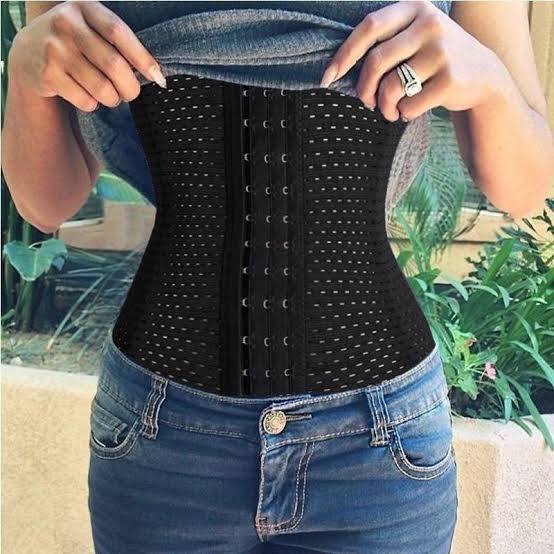Waist trainers are worn to reshape the waistline and shrink the stomach. Waist-shaping corsets aren’t new – in fact, tightlacing (also known as corset training) was quite common in the late Victorian era and came into existence in around 16th century.
However, the Kardashians and other celebrities popularized the trend with pictures of their tightly-cinched tiny waists and the body-shaping movement kicked off. People nowadays wear it for a quick fix. Unfortunately, a waist trainer isn’t going to magically give a naturally thinner woman a curvy body, that’s for sure. Some women also wear it during workouts. It might make you slim at the waist and lead to temporary weightloss, but it doesn’t get rid of body fat in the long run.
So what exactly is waist training and what are the implications? Here’s everything you need to know.
1. Skin irritation
One of the most common effects of waist training is skin irritation. Having something so tightly fastened to your skin for a prolonged amount of time will cause chafing that can cause serious discomfort. You may think a rash is a cheap price to pay for the ‘perfect’ hourglass figure, but you may not feel the same way if it leads to infection and your shape is the same as it always was.
Dr. Galyna, an aesthetics specialist says: “Tightness and repeated use of your waist trainer can cause cramps, discomfort and pinching if it is too tight. This restriction and tightness around the waist could interfere with the appearance and general health of your skin.”
2. Organ shifting
“With waist training, the upper organs move upwards, and the lower organs shift downwards. This can then put a similar pressure on the abdomen – which has been known to cause constipation,” says Dr. Galyna.
3. Acid reflux
“The shifting of organs can also increase the chances of heartburn as your stomach shifts up beyond your diaphragm causing acid reflux,” says Dr. Galyna.
By compressing your mid-section, the waist trainer is also pressing on your stomach up higher increasing your chance of heartburn and indigestion. Not only can it cause pain, but recurring acid reflux can cause long-term damage by eroding the walls of the esophagus.
4. Causes Dehydration
“You might see an increase in body temperature and excessive sweating whilst ‘waist training’ during exercise, which can cause dehydration,” says Dr Galyna. “To minimise any symptoms, we would advise people to stay fully hydrated.”
5. Breathing
As well as putting pressure on your stomach, your entire internal network is being pushed to fit the shape of the cincher. By restricting your diaphragm, you’re reducing the amount of oxygen you can take it. This can leave you feeling short of breath, light-headedness and even cause you to faint. To this, Dr. Galyna says that “the quality and depth of your breathing, particularly if wearing your ‘waist trainer’ while exercising, is also impacted.”
6. Bruising
Unlike traditional corsets, modern waist trainers don’t have the same strength to affect the shape of your bones. This will means you will be left with bone bruises as the trainer compresses your body. You may not think this sounds that bad but bone bruises are significantly more painful and long lasting than regular bruises. With social media users getting younger and younger, there is a far greater risk to children whose bones have not formed fully as cinchers could actually affect the development of their bone structure. Hence it is not advised to be used by people who are still growing.
7. Numbness
Not only will your blood flow be limited by the compression, your nerves may also be affected. This could cause you to experience pins and needles or numbness in your legs.
8. Affects back muscles
Prolonged waist training means your abdominal muscles aren’t as active, even if you are exercising regularly. Dr. Galyna points out that the waist trainer has a potential to weaken the abdominal muscles as one isn’t using the muscles for support when the trainer is on.
“The corset provides the support, not the muscles, and if the muscles are not used they will waste.”
9. Restricts eating
Waist trainers are designed to cinch at the waist, which can lead to an unhealthy, unsafe decrease in the amount of food you eat because you’ll feel fuller, faster.
10. Psychological addiction
Although a waist cincher will make your waist appear slimmer while you’re wearing it, every time you take it off your unhappiness with your shape will be perpetuated through comparison. Your brain associates the perfect figure with the waist trainer. This false hope can even leave you with the belief that diet and exercise is no longer necessary, as well as becoming addicted to the wearing the cincher. In the long-run, you’ll most find the whole experience rather distressing when the desired results are not met.
“There is anecdotal evidence wearing a corset can be addictive to those people with an obsessive personality,” says Lemon.
Credit: pulse.ng
Photo credit : Google
